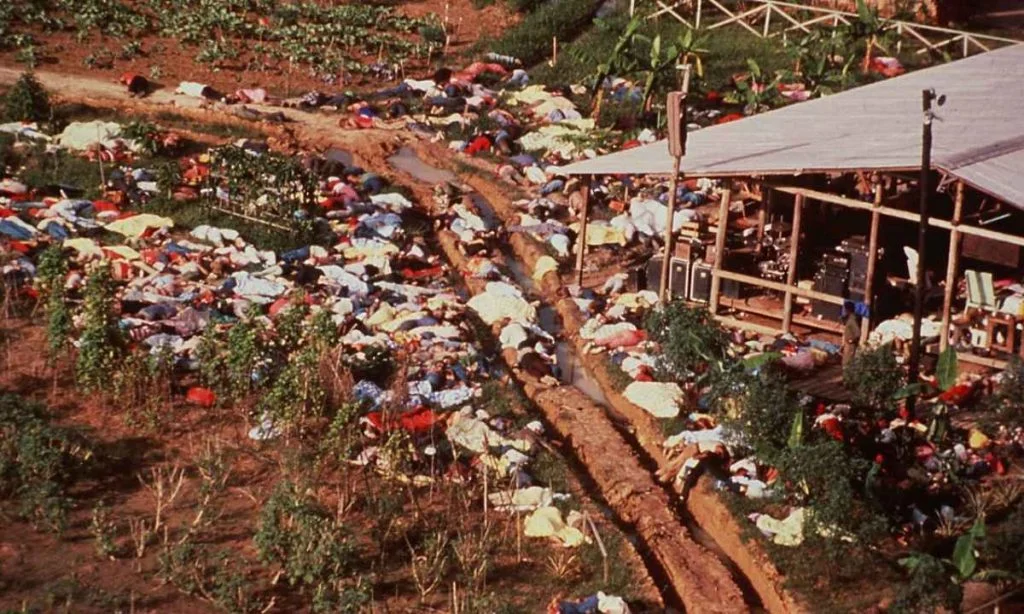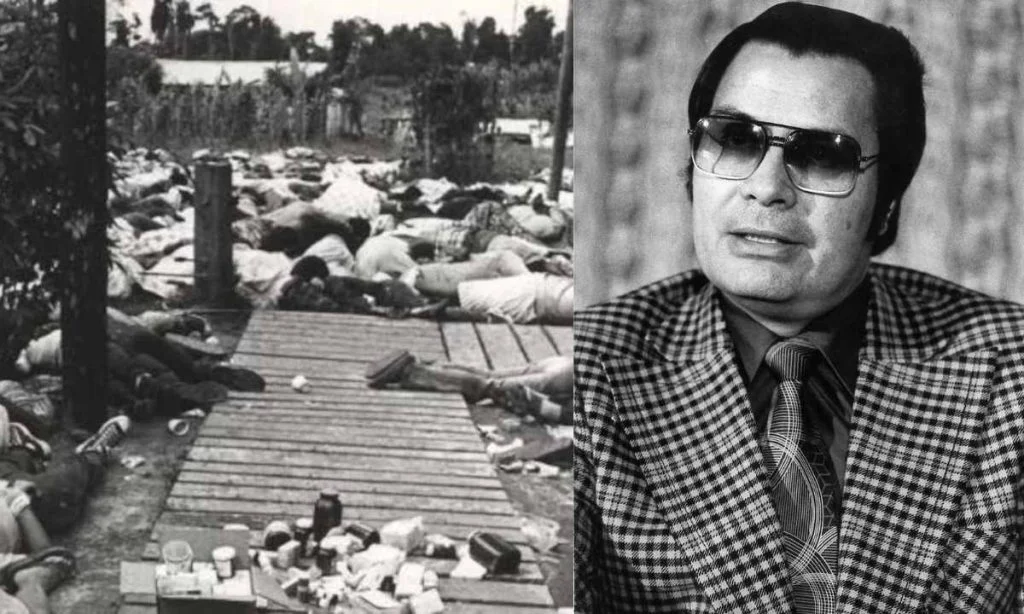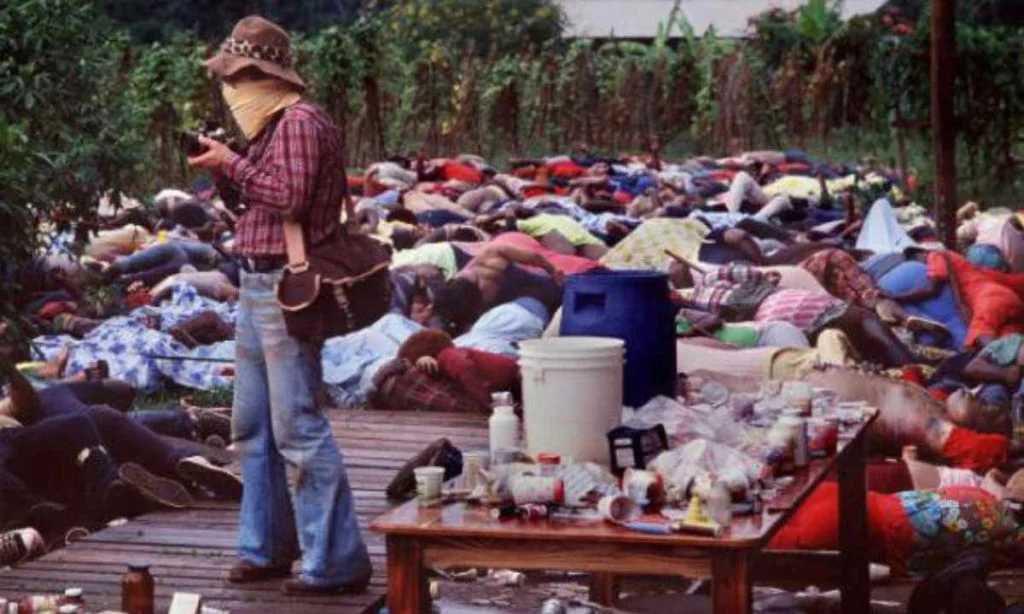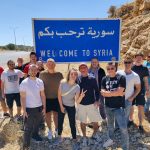Nestled in the dense jungles of Guyana, Jonestown is infamous for being the site of one of the most devastating cult-related tragedies in modern history.
The People’s Temple Agricultural Project, commonly known as Jonestown, became the stage for a mass suicide-massacre in November 1978 that claimed over 900 lives, most of them Americans. This tragic event marked the collapse of a socialist utopian dream that spiraled into violence, paranoia, and death.
But the story of Jonestown is more than just the tragic ending—it’s a tale of radical politics, ties to communism, and Cold War dynamics. Jim Jones, the charismatic leader of the People’s Temple, had a vision of creating a perfect socialist community, free from the capitalist society he saw as corrupt and doomed. His ties to Marxism and even attempts to align his commune with the Soviet Union make Jonestown a unique and troubling story in the broader political landscape of the 1970s.
The People’s Temple and Jim Jones’ Vision
Founded by Jim Jones in Indiana during the 1950s, the People’s Temple began as a church promoting civil rights, racial integration, and community support. However, as time went on, Jones’ obsession with power, control, and his increasingly extreme political beliefs started to dominate the group’s ideology. Jones was a self-proclaimed Marxist and often preached against capitalism, claiming it was the root of societal ills. By the late 1970s, the church had moved its base to California, where Jones’ paranoia and fear of government interference began to intensify.

The move to Guyana in 1977 was a desperate attempt to escape what Jones viewed as the inevitable collapse of the US due to racism, poverty, and corruption. Jones saw Guyana, a socialist country at the time, as a safe haven for his communist ideals. In fact, Guyana’s government, under Prime Minister Forbes Burnham, was sympathetic to the People’s Temple because they shared a common leftist ideology. The Cold War context was vital—Guyana’s leanings toward communism made it easier for Jones and his followers to set up their commune with little interference from local authorities.
Guyana’s Communist Leanings and Leniency
Part of what made it easy for the People’s Temple to establish itself in Guyana was the country’s political situation at the time. Under the leadership of Forbes Burnham, Guyana had adopted a socialist stance, leaning toward communism and seeking alliances with both Cuba and the Soviet Union. This allowed Jim Jones and his followers to set up their commune with little resistance from the government, which viewed the People’s Temple as a potential ally against imperialist powers like the United States.
Guyana’s socialist government likely saw the People’s Temple as a useful ideological partner, which might explain why there was little oversight or concern about the group’s activities in the jungle. This leniency allowed Jones to solidify his grip on his followers without much interference, creating the isolated environment that would ultimately lead to the tragedy.
To read about Mass Games in Guyana click here.
Jonestown and the USSR
One of the lesser-known aspects of Jonestown is its connections with the Soviet Union. Jim Jones was not shy about his admiration for Marxist-Leninist principles, and he actively sought to align his movement with the Soviet Bloc. Throughout their time in Guyana, Jones and his closest advisors were in contact with Soviet officials, exploring the possibility of relocating the entire commune to the USSR. This potential move was part of Jones’ broader vision of creating a “utopian socialist state”, which he felt could only truly flourish under a communist regime.


Jones’ flirtation with the Soviet Union was not just ideological—he saw the USSR as a political ally that could help protect him and his followers from what he believed was imminent US government oppression. In one notable meeting, Jones even declared that Jonestown was an “extension of the Soviet Union”. However, whilst Soviet officials entertained the idea of resettling the group, they ultimately hesitated to fully commit, perhaps sensing the growing instability within the People’s Temple.
The Massacre: A Chilling End
Jonestown’s dark and bloody end came on November 18, 1978, when Congressman Leo Ryan visited the commune to investigate claims of human rights abuses. His visit ended in violence, as Ryan and several members of his delegation were ambushed and killed by armed temple members at a nearby airstrip. Jones, fearing the fallout of this event, ordered his followers to commit “revolutionary suicide” by drinking cyanide-laced Flavor Aid (often mistakenly referred to as Kool-Aid). Over 900 men, women, and children died that day, either by ingesting the poison willingly or being forced to do so. Jones himself was found dead from a gunshot wound to the head, a grim conclusion to his failed utopian experiment.
The tragedy was the largest loss of American civilian life in a non-natural disaster before 9/11 and remains one of the most notorious examples of a cult gone wrong.

Visiting Jonestown Today
While Jonestown itself is largely overgrown and abandoned today, the site can still be visited. It’s not on the usual tourist trail, but for those with a deep interest in dark tourism, it is possible to explore what remains of this infamous settlement.
To visit Jonestown, you’ll need to go through Georgetown, Guyana’s capital. From there, you can organize a trip to the remote location with the help of local guides who are familiar with the area. The site of Jonestown is now little more than jungle overgrowth, with few remaining structures. However, the atmosphere is palpable, and those who visit often describe the site as haunting and emotionally overwhelming. There are no formal tours, but you can still walk around the area where the Pavilion once stood, the place where the mass suicide occurred.
Logistics of the Visit
Jonestown is located deep within the jungle of Guyana’s Northwest Region, and getting there requires some planning. There are no direct roads, so most trips involve a combination of driving and riverboat travel. Since there are no commercial tour operators running trips to Jonestown, you’ll need to arrange a private guide or hire a local expert to help navigate the terrain and handle the necessary permits. While it’s not an easy or comfortable journey, it’s a unique and sobering experience for those with a strong interest in history and the psychology of cults.
Visiting with Young Pioneer Tours
As well as our regular tours to Guyana we also offer bespoke travel to Guyana, which can include seeing the remnants of Jonestown.
Now this is not to say that it is an easy feat, for it is not. It is though more than possible with our expert planners and guides.
Click the link for our Guyanas tours.





